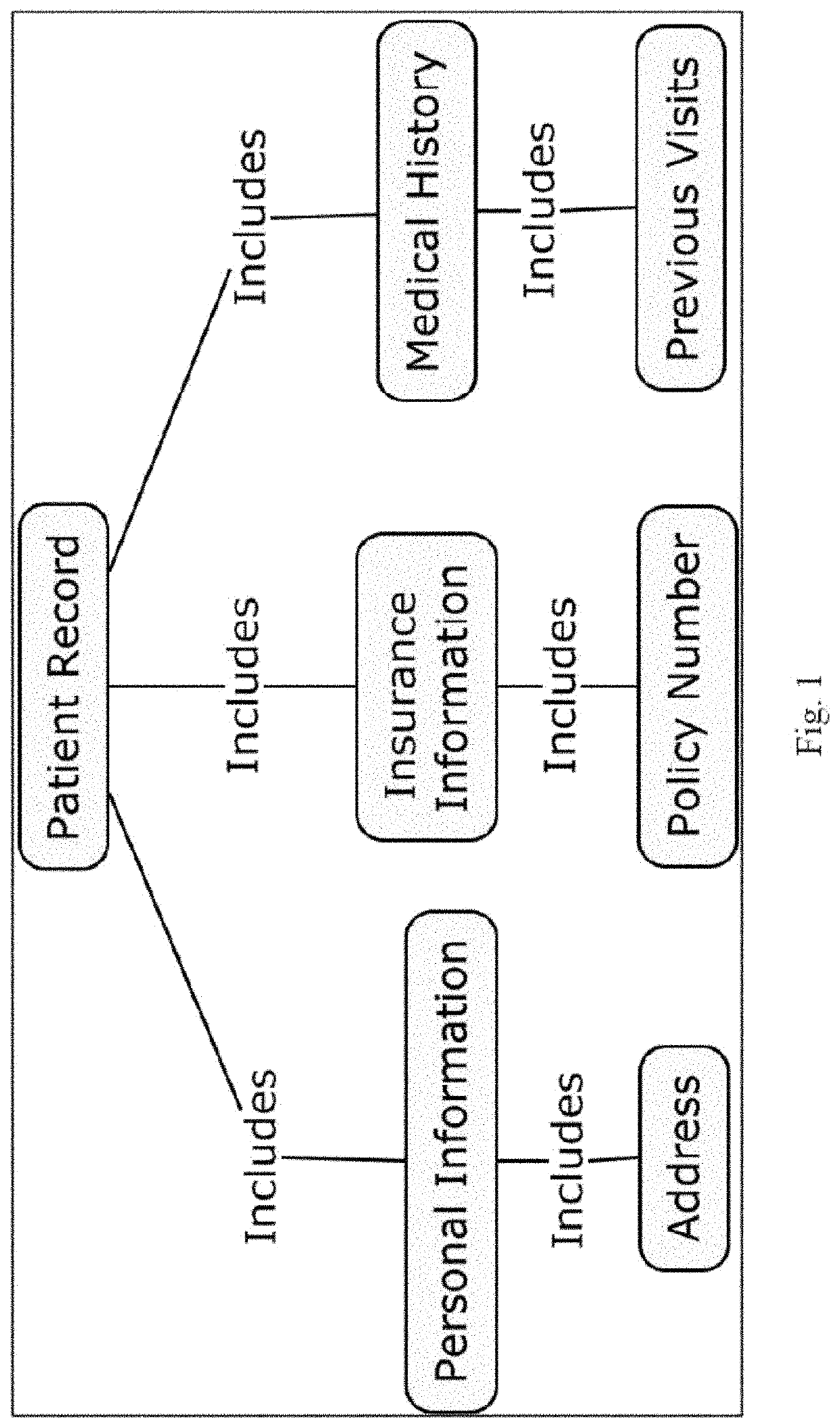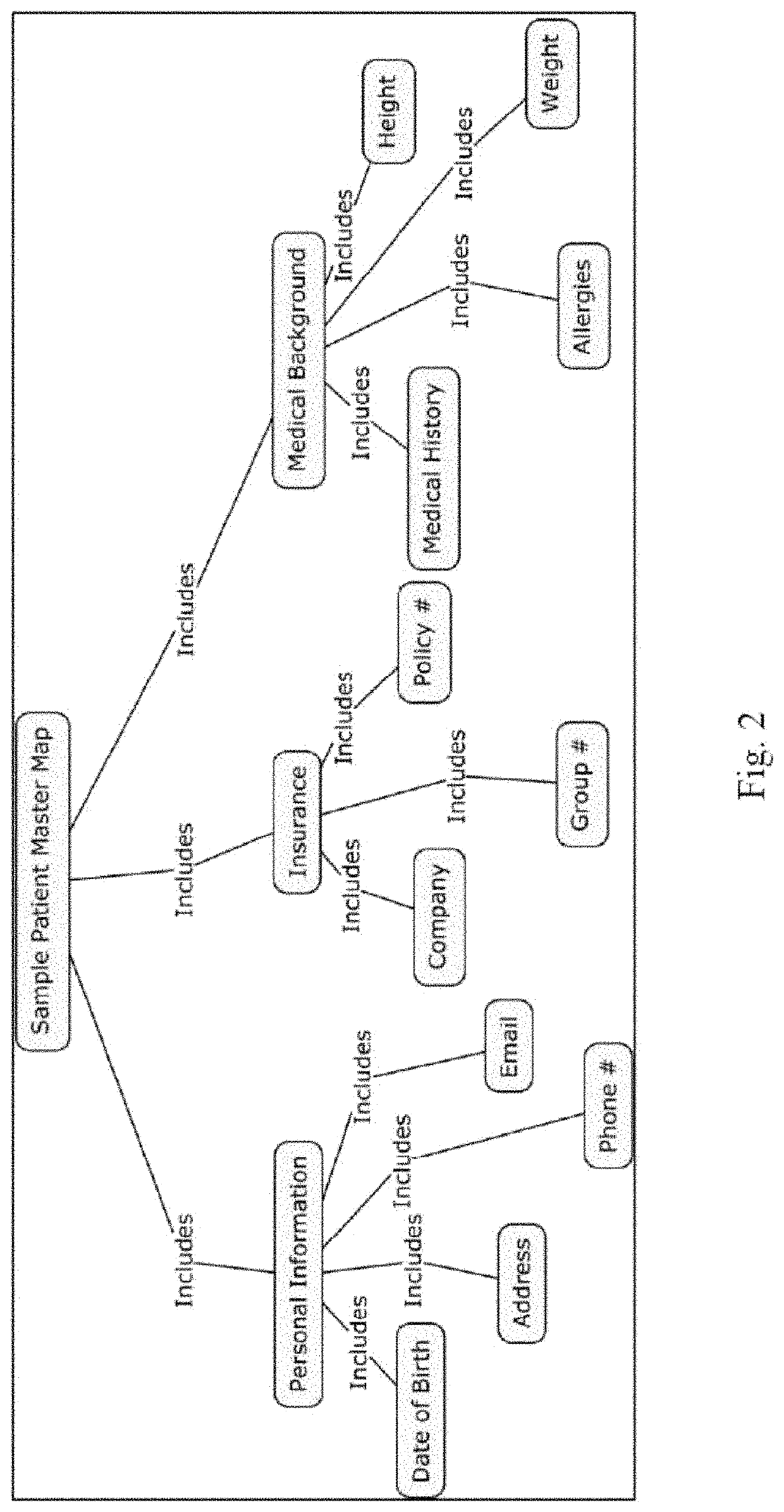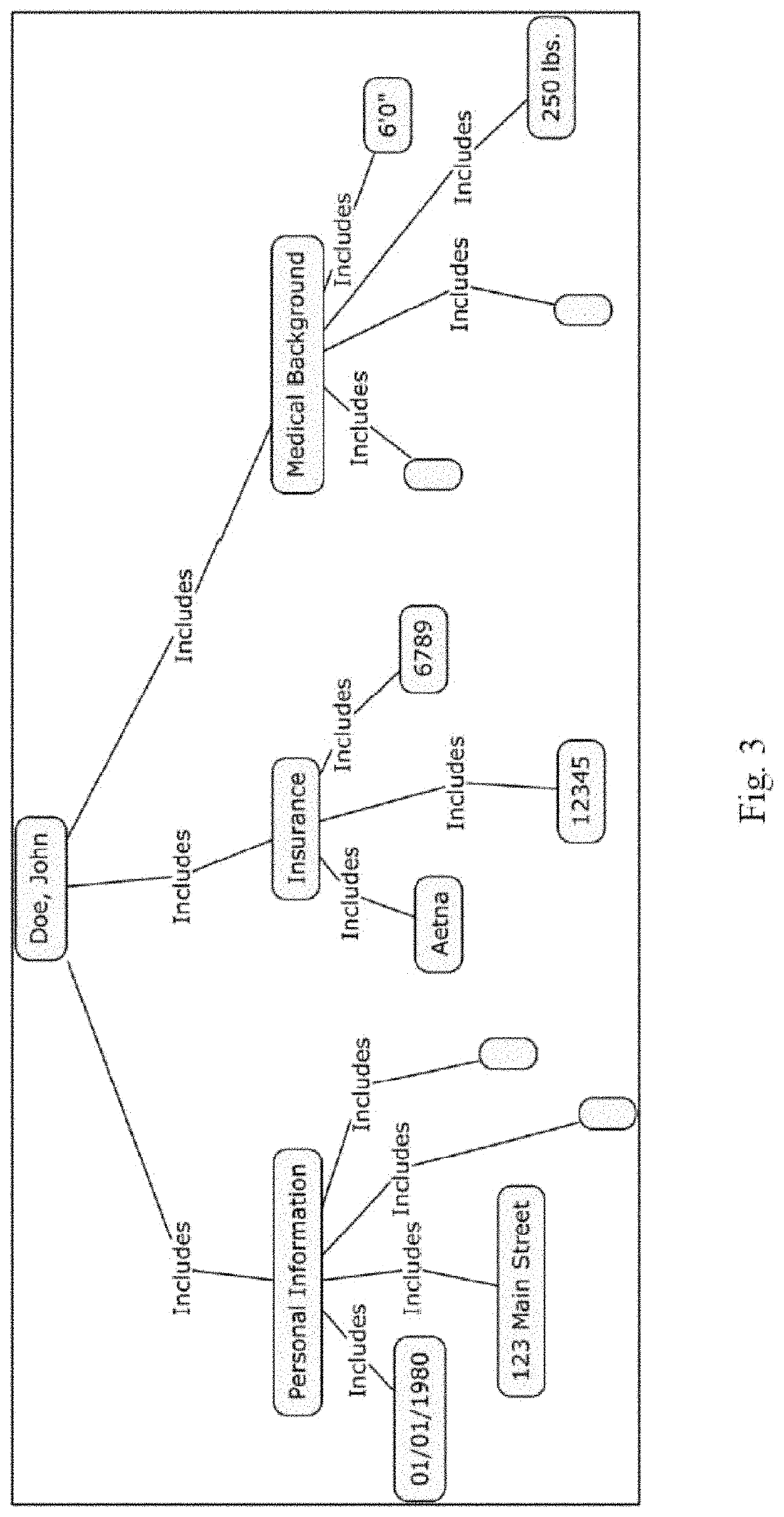Method and System for Managing Chronic Illness Health Care Records
a health care record and chronic illness technology, applied in the field of health care patient record data management methods and systems, can solve the problems of weak patient record and database, few systems in place, and no centralized mechanism by which various health care software database packages can be used, and achieve the effect of improving documentation quality
- Summary
- Abstract
- Description
- Claims
- Application Information
AI Technical Summary
Benefits of technology
Problems solved by technology
Method used
Image
Examples
Embodiment Construction
[0075]The present invention will be more fully understood and appreciated by reading the following Detailed Description in conjunction with the accompanying drawings, wherein like reference numerals refer to like components.
[0076]As detailed herein, the present disclosure is directed to embodiments of a method and system for managing health care patient record data by evaluating the strength and completeness of patient record data stored in health care / medical databases through determining the existence and relative quality of such data and performing statistical analyses. Some embodiments of the present invention are adapted to manage chronic illness health care records, the details of which are described in greater detail in the “managing chronic illness health care records” section below.
[0077]Patient record data includes but is not limited to electronic medical records (EMRs), electronic health records (EHRs), and any other type of digitized charts of a health care provider or c...
PUM
 Login to View More
Login to View More Abstract
Description
Claims
Application Information
 Login to View More
Login to View More - R&D
- Intellectual Property
- Life Sciences
- Materials
- Tech Scout
- Unparalleled Data Quality
- Higher Quality Content
- 60% Fewer Hallucinations
Browse by: Latest US Patents, China's latest patents, Technical Efficacy Thesaurus, Application Domain, Technology Topic, Popular Technical Reports.
© 2025 PatSnap. All rights reserved.Legal|Privacy policy|Modern Slavery Act Transparency Statement|Sitemap|About US| Contact US: help@patsnap.com



